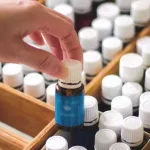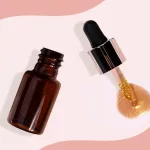Let’s cut to the chase: steroids aren’t a single monolithic thing. They belong to several families, each with its own purpose, upside, and downside. In the next few minutes you’ll walk away knowing exactly which type fits a medical need, a performance goal, or—most importantly—why you might want to steer clear.
Imagine steroids as a toolbox. Some tools build, some repair, and a few are best left unopened unless you’re a seasoned pro. Knowing the tool you’re holding makes all the difference between a safe project and a hazardous mess. Ready to explore?
What Is a Steroid?
Core Chemical Structure
All steroids share a four‑ring backbone—four fused carbon rings labeled A, B, C, and D. This shape gives them the ability to slip into cell membranes or bind to specific receptors, triggering a cascade of biological actions. Wikipedia breaks it down nicely.
Two Main Functions
First, steroids can act as structural components of cell membranes, helping keep the membrane fluid and functional. Second, they serve as signaling molecules that tell cells to make or break down proteins, regulate inflammation, or develop secondary sex characteristics.
Mini‑Table: Steroid Basics
| Steroid | Example | Primary Role |
|---|---|---|
| Structural | Cholesterol | Membrane fluidity |
| Signaling | Testosterone | Muscle growth, androgenic effects |
| Anti‑inflammatory | Prednisone | Suppress immune response |
Big Families of Steroids
Anabolic‑Androgenic Steroids (AAS)
These are the “muscle‑builders” most people think of first. They mimic testosterone, boosting protein synthesis and muscle hypertrophy. They’re legal when prescribed, but misuse is rampant in bodybuilding and sport.
Corticosteroids
Think of them as the fire‑fighters of your body. Glucocorticoids like prednisone calm inflammation, while mineralocorticoids such as fludrocortisone control salt‑water balance. Doctors rely on them for asthma, arthritis, and adrenal disorders.
Estrogens & Progestogens
These hormones dominate the female reproductive system. They’re used in hormone‑replacement therapy, birth control, and certain cancers. Their benefits are undeniable, but they can also shift clotting risk and mood.
Neuro‑steroids
These tiny powerhouses are made in the brain and influence mood, stress response, and even seizure activity. Allopregnanolone, for instance, is being studied for postpartum depression.
Steroidal Anti‑androgens & Others
They block androgen receptors—useful in prostate cancer or severe acne. Examples include cyproterone acetate and spironolactone.
Anabolic Steroid Types – Bulking vs. Cutting
Bulking Steroids
When the goal is pure size, athletes turn to compounds that flood the muscles with nitrogen and water. Classic bulking agents include:
- Anadrol (Oxymetholone)
- Dianabol (Methandrostenolone)
- Testosterone Enanthate
- Trenbolone
Benefits
Massive uptick in protein synthesis, rapid strength gains, and increased red‑blood‑cell count—great for off‑season training.
Risks
Water retention, elevated blood pressure, liver strain (especially with oral forms), and suppression of your own testosterone production.
Cutting Steroids
When the calendar flips to “lean and defined,” the aim shifts to preserving muscle while burning fat. Popular cutting agents are:
- Anavar (Oxandrolone)
- Winstrol (Stanozolol)
- Testosterone Cypionate (lower dose)
Benefits
Enhanced fat oxidation, tighter muscle “hardness,” and a modest boost in strength without a massive calorie surplus.
Risks
Bad cholesterol spikes, mood swings, and potential loss of libido if estrogen isn’t managed.
Oral vs. Injectable
Oral steroids travel through the liver first—great for convenience but harsher on hepatic health. Injectables bypass the liver, delivering the compound straight to the bloodstream for steadier levels. Your choice should balance convenience, side‑effect profile, and the advice of a qualified clinician.
Comparison Matrix
| Type | Route | Typical Use | Key Benefits | Key Risks |
|---|---|---|---|---|
| Anadrol | Oral | Bulking | Massive weight gain | Liver toxicity |
| Dianabol | Oral | Bulking | Strength surge | Acne, estrogenic water retention |
| Testosterone Enanthate | Injectable | Bulking/Cutting | Versatile, natural hormone | Testosterone suppression |
| Trenbolone | Injectable | Bulking | Extreme density | Night sweats, cardiovascular strain |
| Anavar | Oral | Cutting | Lean gains, low aromatization | Potential lipid issues |
| Winstrol | Oral/Injectable | Cutting | Hard, defined look | Joint dryness, cholesterol |
Corticosteroid Types & Medical Uses
Glucocorticoids
Prednisone, dexamethasone, and methylprednisolone fall into this group. They shut down inflammation, silence an over‑active immune system, and boost the body’s ability to handle stress.
Common Indications
- Asthma & COPD flare‑ups
- Rheumatoid arthritis
- Autoimmune skin conditions (e.g., psoriasis)
- Acute allergic reactions
Key Risks
Prolonged use can erode bone density (osteoporosis), raise blood sugar (diabetes risk), and create a “Cushingoid” appearance—think rounded face and abdominal fat.
Mineralocorticoids
Fludrocortisone is the go‑to drug for Addison’s disease, helping your kidneys keep sodium and retain water.
Primary Safety Concern
Too much can cause high blood pressure and fluid overload, especially in people with heart disease.
Other Steroid Categories You Might Encounter
Estrogenic Steroids
Estradiol and conjugated estrogens are the backbone of hormone‑replacement therapy for menopausal women and certain transgender protocols. They support bone health and cardiovascular function but may increase clotting risk.
Progestogenic Steroids
Progesterone, medroxyprogesterone, and norethisterone are used in birth control pills and to treat abnormal uterine bleeding. Their main caution is potential mood changes and weight gain.
Neuro‑steroids
Allopregnanolone, a metabolite of progesterone, modulates GABA receptors, producing calming effects. Researchers are exploring it as a rapid‑acting antidepressant.
Steroidal Anti‑androgens
Spironolactone blocks the androgen receptor, useful for acne, hirsutism, and as an adjunct in prostate cancer therapy. It also acts as a potassium‑sparing diuretic.
Matching a Steroid to Your Goal – Balancing Benefits & Risks
Decision Flow
1️⃣ Identify the goal: medical treatment, muscle gain, or fat loss.
2️⃣ Choose the family: AAS for performance, corticosteroids for inflammation, etc.
3️⃣ Pick the sub‑type: bulking vs. cutting, oral vs. injectable.
4️⃣ Confirm safety: check contraindications, review lab work, and always involve a healthcare professional.
Real‑World Example
Meet Alex, a 29‑year‑old runner who developed severe asthma. His pulmonologist prescribed a short course of oral prednisone (a glucocorticoid) during flare‑ups. Alex noticed a temporary “puff” in his appetite and mild insomnia, but his breathing improved dramatically. He never touched anabolic steroids because his aim was endurance, not size. The key takeaway? A well‑chosen steroid, under medical supervision, can be a lifesaver—while unsupervised AAS use can jeopardize that very health.
Bottom Line on Steroid Risks
Short‑Term Risks
- Hormonal suppression (your body may stop making its own testosterone or cortisol)
- Liver strain, especially from oral anabolic compounds
- Acne, oily skin, and hair loss
- Mood swings, irritability, or “roid rage”
Long‑Term Risks
- Cardiovascular disease – elevated LDL, lowered HDL
- Permanent fertility issues
- Psychiatric effects – depression, anxiety, dependence
- Organ damage – kidneys, liver, heart
Risk Mitigation Strategies
• Get baseline blood work and repeat every few months.
• Keep cycles short (6‑12 weeks) and include “off” periods.
• Use post‑cycle therapy (PCT) to help your endocrine system recover.
• Pair any steroid regimen with a balanced diet, regular cardio, and proper sleep.
According to Medical News Today, cycling, stacking, and pyramiding are popular patterns, but the evidence on whether they truly reduce risk remains limited. Bottom line: the safest route is professional guidance.
Conclusion
There you have it—a friendly walkthrough of the many types of steroids out there, the benefits they can deliver, and the risks you should never ignore. Steroids are powerful tools; like any tool, they’re only effective when you know exactly what they’re built for and how to handle them responsibly.
Whether you’re considering a prescription corticosteroid for an inflammatory flare, exploring hormone‑replacement options, or simply curious about the science behind the gym hype, the key is informed choice. Talk to a qualified health professional, keep an eye on your labs, and weigh short‑term gains against long‑term health.
What’s your experience with steroids—medical or otherwise? Share your story in the comments, ask questions, or reach out if you need guidance. We’re all in this learning journey together, and the more we talk, the safer we all become.


















Leave a Reply
You must be logged in to post a comment.